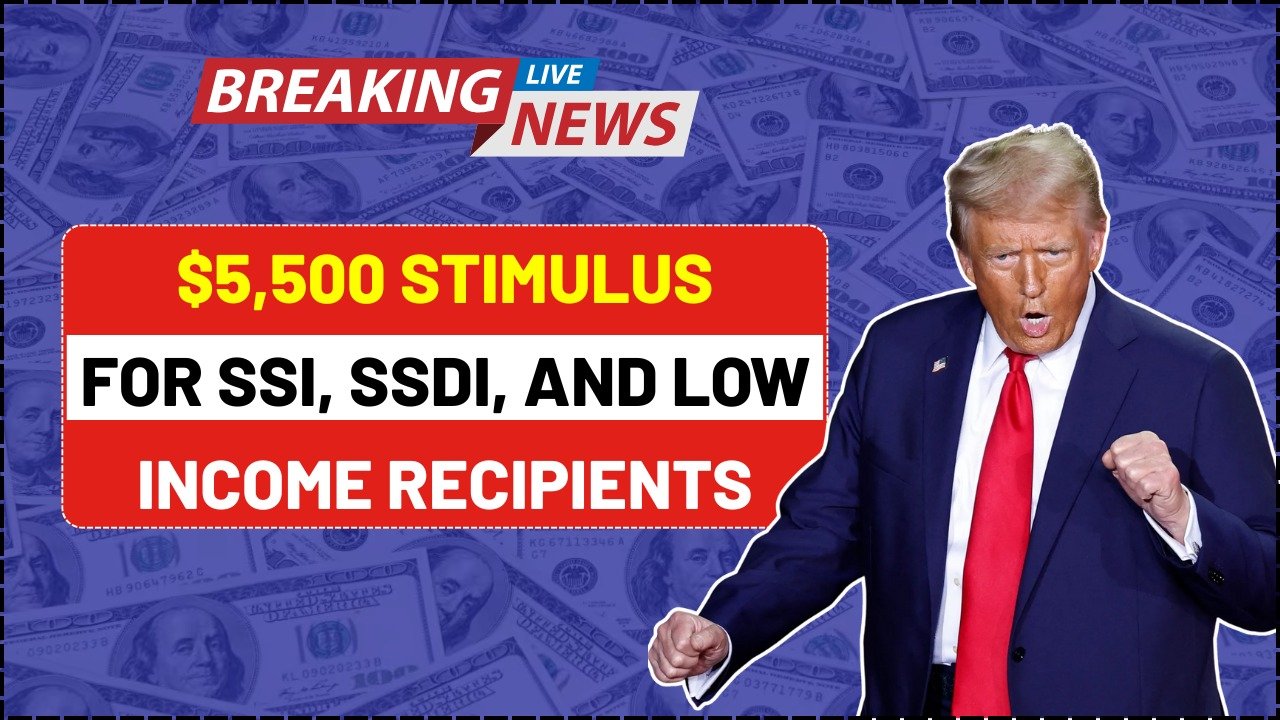With rising inflation and financial pressure in the U.S., there’s growing buzz about a potential $2,500 stimulus check for SSI (Supplemental Security Income), SSDI (Social Security Disability Insurance) recipients, and low-income individuals. On social media and in news headlines, many are hoping this check—when added to other benefits—could provide a total relief of up to $5,500. But how much of this is fact, and what is still speculation?
Here’s a simplified breakdown of the current situation, past stimulus efforts, eligibility rules, and how to stay prepared in case a new check is approved.
Overview
| Category | Details |
|---|---|
| Rumored Stimulus Amount | $2,500 (not officially confirmed) |
| Target Groups | SSI, SSDI recipients and low-income individuals |
| Official Status | No confirmation yet from IRS or U.S. Congress |
| Total Potential Relief | Up to $5,500 (includes possible additional benefits) |
| Action Recommended | File taxes, update bank details, follow IRS website |
Eligibility Criteria
If the rumored $2,500 check becomes reality, eligibility is likely to mirror past programs. Here’s what could determine qualification:
- Income Limits:
- Individuals earning up to $75,000
- Couples earning up to $150,000
- Reduced amount if income exceeds these limits
- Additional Factors:
- Having dependents (children, disabled members, college students)
- Social Security status (SSI, SSDI)
- Filing tax returns regularly
Elderly or non-filers may need to complete extra steps to qualify.
How Would the Payment Be Distributed?
If Congress approves the check, the IRS will most likely use three methods to distribute the funds:
- Direct Deposit – Fastest option for those who’ve linked their bank accounts during tax filing or with Social Security.
- Paper Check – Mailed to addresses for those not using direct deposit.
- Prepaid Debit Card – A method used for those without bank accounts.
To avoid delays, people should ensure their bank details and address are up to date with either the IRS or SSA.
Payments Schedule
There is no payment timeline yet, since no official approval exists. But based on previous patterns:
- 2–3 weeks after approval, direct deposits may begin.
- Paper checks and debit cards may follow within 1 to 3 months.
This assumes that a law is passed and signed by the President.
How to Track a Stimulus Payment?
If the payment gets approved, the IRS will likely relaunch the “Get My Payment” online tool. Here’s how it works:
- Visit irs.gov
- Click on “Get My Payment”
- Enter:
- Social Security Number
- Date of Birth
- Home Address
- View status of your payment—whether it’s sent, pending, or delayed.
This tool was very effective during past payment cycles and may return for any future stimulus distribution.
What Past Stimulus Checks Teach Us
Looking at history, stimulus payments have only been issued when Congress passed a law and the President signed it. Here’s a quick recap of earlier reliefs:
- 2001: $300 check during economic downturn
- 2008: $600 check during the Great Recession
- 2020: $1,200 during the COVID-19 pandemic
- 2021: $1,400 during the second wave of COVID-19
All these were officially approved programs and not based on speculation. This tells us that no stimulus check can be issued without legal backing.
FAQs
1. Is the $2,500 stimulus check confirmed for 2025?
A: No, there is no official announcement yet from the IRS or U.S. Congress.
2. How will I get the payment if it’s approved?
A: It would likely be sent via direct deposit, paper check, or prepaid debit card by the IRS.
3. Where can I get official updates?
A: Visit the IRS website: https://www.irs.gov for all verified news and payments tools











